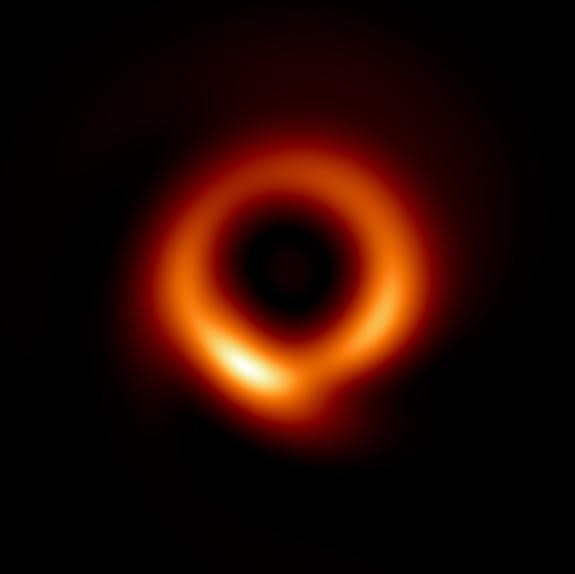See the sharpest-image ever of a supermassive black hole
The iconic 2019 image of a supermassive black hole that has since been dubbed the "orange donut" has gotten a makeover. Scientists unveiled the sharpest-ever image of the blackhole on Thursday, showcasing a transformation that took its image from "fuzzy" to "skinny."
And it's all because of a machine's unique learning capabilities.
The revamped image is a reconstruction of one released in 2019. The earlier image, captured by the Event Horizon Telescope, is of the supermassive black hole found in the center of Messier 87 (M87), an elliptical galaxy that's home to "several trillion stars" and located 54 million light-years away from Earth, according to NASA .
The new picture, the clearest ever of a supermassive black hole, was unveiled by scientists from the Institute for Advanced Study in New Jersey in the Astrophysical Journal Letters on Thursday.
The original image is one that's extremely fuzzy, with a massive orange and yellow glow surrounding a smaller black space in the middle. With the "help of machine learning," IAS scientists revealed that the black hole actually has a much smaller orange and yellow glow, seemingly just a band around a very large dark space.

That band is a "bright ring of emission" that, according to IAS, is "expected to be produced by hot gas falling into the black hole."
"With our new machine learning technique, PRIMO, we were able to achieve the maximum resolution of the current array," lead author of the research Lia Medeiros said in a press release. "Since we cannot study black holes up-close, the detail of an image plays a critical role in our ability to understand its behavior. The width of the ring in the image is now smaller by about a factor of two, which will be a powerful constraint for our theoretical models and tests of gravity."
Medeiros and others developed the PRIMO modeling system, which co-developer Tod Lauer says is a "new approach to a difficult task." That system used a type of machine learning that lets computers make rules based on large sets of "training material," AIS said. In this case, they had computers look at more than 30,000 pictures of black holes taking in gas. Doing that allowed the system to essentially fill in the blanks of what was missing in the 2019 image.
"it provides a way to compensate for the missing information about the object being observed, which is required to generate the image that would have been seen using a single gigantic radio telescope the size of Earth," Lauer said.
Medeiros said that the way in which PRIMO filled in that missing data was "a way that has never been done before by using machine learning."
While the image is definitely a major milestone, it is still a theoretical expectation and not an actual photograph of the supermassive black hole. But it could still have "important implications" for the field of study, Medeiros said.
"The 2019 image was just the beginning," Mederios said. "If a picture is worth a thousand words, the data underlying that image have many more stories to tell."
Black people live longer in counties with more Black doctors, study finds
Ceasefire lasts mere minutes before fighting resumes in Sudan
Dominion Voting Systems' lead attorney breaks down Fox News settlement
